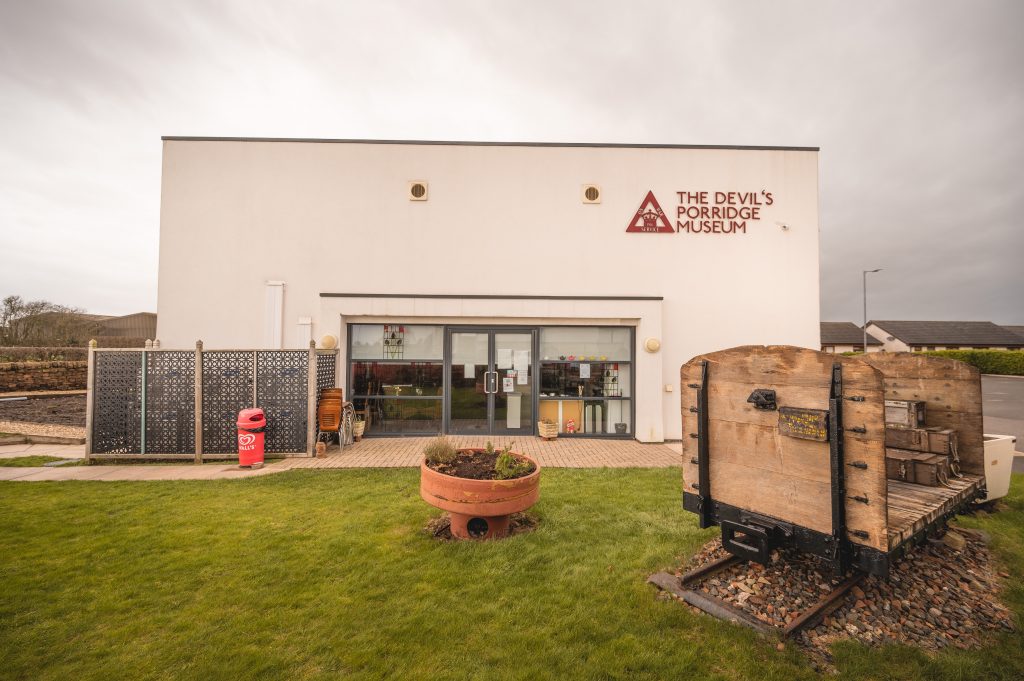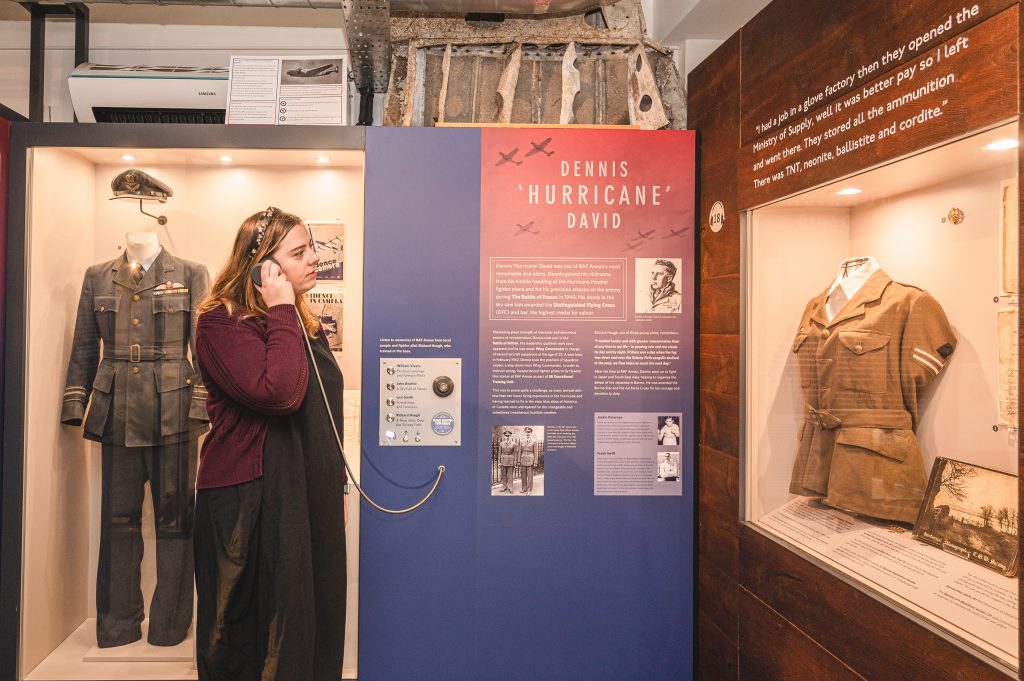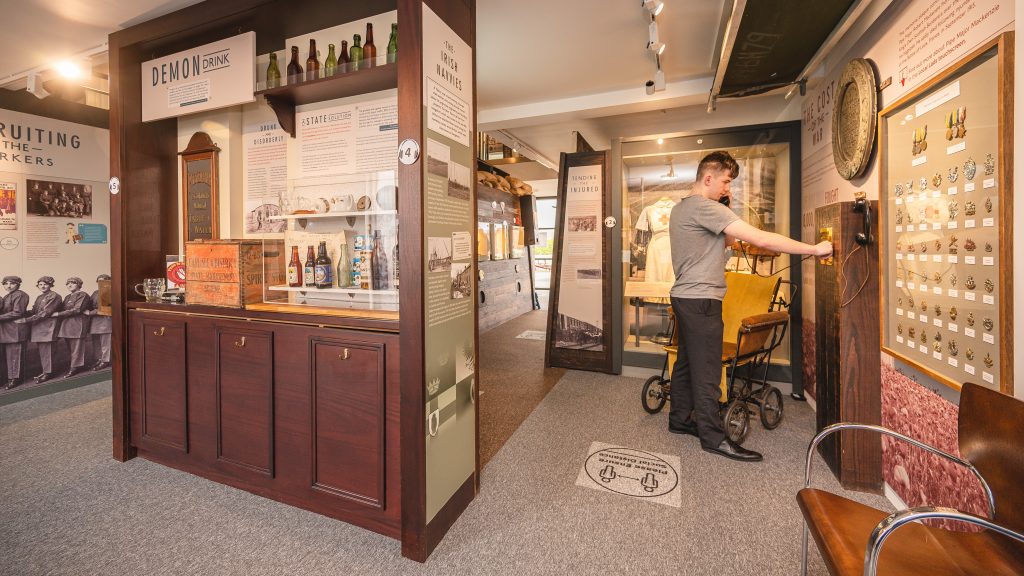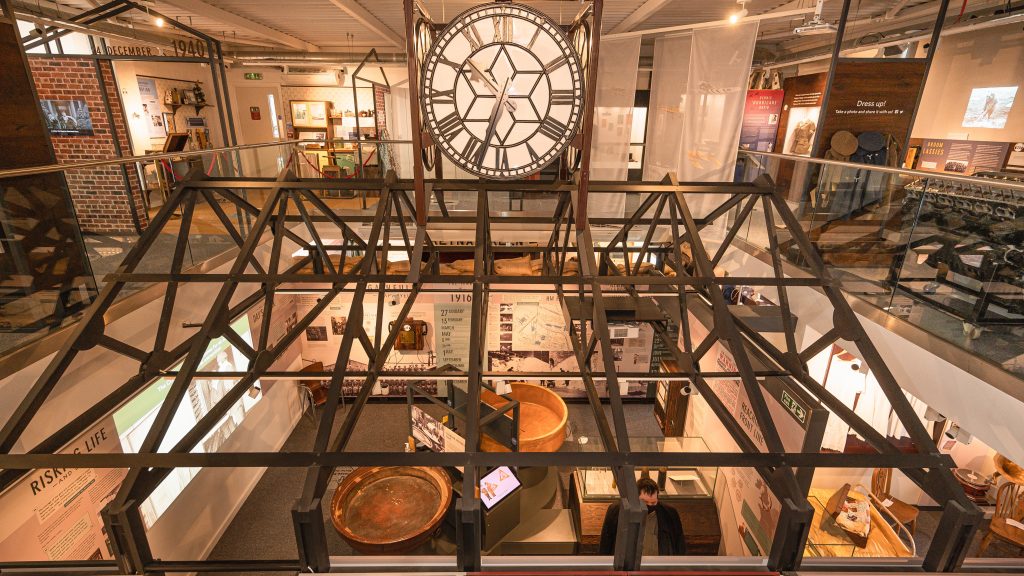Responsibility for children on school visits remains with the teachers and accompanying adults at all times. Teachers are advised to visit our museum in advance of their booked school trip to undertake a risk assessment specific to the individual needs of their group; the following general information is intended to assist with this.
External Environment
 Museum site
Museum site
Entrance to our site is via one access road from the main road (Annan Road, B721).
This leads to our public car and coach parking, which is clearly marked with directional signage. The museum building is surrounded by brick and tarmac pavement. Our site is accessible by wheelchair.
Arriving by coach
We recommend that coaches stop outside our main door to allow children to disembark, before parking in our coach park. When returning to your coach, please be aware that vehicles may enter and leave our adjacent public car park at any time.
Internal Environment
Museum building
Our museum is a public building with a variety of rooms and exhibition spaces. There are different layouts and lighting levels across two floors. This can sometimes be disorientating, particularly for children. The Education Room on our upper floor is used as a base and meeting point for school visits, unless otherwise indicated at time of booking.
 We have hard concrete floor surfaces. Therefore, extra care should be taken using our stairs. To ensure the safety of children and other visitors, we ask that children do not run anywhere in the museum building.
We have hard concrete floor surfaces. Therefore, extra care should be taken using our stairs. To ensure the safety of children and other visitors, we ask that children do not run anywhere in the museum building.
We recommend that children do not leave the building unaccompanied during their visit, unless instructed to do so in the case of emergency. Visits to external exhibits will usually be led by uniformed museum staff and volunteers as part of programmed activities.
Accessibility
Visitors with mobility impairments can access our upper floor via a lift. We recommend that young children do not use the lift without the guidance of their teacher or accompanying adult.
Videos and sound clips play on loop within the museum. There are a number of touchscreen interactives and headphones throughout the museum. These digital supplements to our displays may be disorientating for visitors with special educational needs. They can be switched off, if required.
We aim to be accessible to all visitors and strive to make any reasonable adjustments to be inclusive of all. Please inform us in advance if any students require adjustments, both to displays within the museum and in the education sessions provided, and we will be happy to accommodate these.
You can find some more resources on the accessibility section of the museum’s website here>
Supervision and behaviour
Teachers and accompanying adults must remain with their children at all times to supervise their activities, monitor their behaviour, ensure their health and safety, and accompany them in the event of emergency evacuation.
 Adult-to-child ratio
Adult-to-child ratio
School groups must have the correct adult-to-child ratio in order for facilitated visits to take place. A minimum of four adults is required for groups of up to 25 children; for larger groups, a minimum of five adults is usually required. Please indicate in advance of your visit if the required number of accompanying adults cannot be reached.
Behaviour
We ask that teachers ensure children understand how they are expected to behave at the museum. On the rare occasion where a child’s behaviour adversely affects the safety of others, or where a child causes wilful damage to our exhibits, they may be asked to leave. Please have contingency measures in place in case a member of your group is asked to leave the building.
Fire and Evacuation
Fire Alarm
Our fire alarm is an undulating, electronic siren. System tests are not scheduled during booked school visits therefore any alarm activation should be treated as an emergency.
Evacuation
If the fire alarm sounds, the following steps should be taken:
- All visitors should evacuate the building, quickly and calmly, via the nearest exit. Escape routes are indicated by signs.
- Do not stop to collect personal belongings and do not re-enter the building unless instructed to do so.
- There are four emergency exits on the ground floor, toward each corner of the building. Please note that the two emergency exits at the rear of the building have a raised step immediately outside the door.
External Fire Assembly Point
Visitors should assemble at the designated Fire Assembly Point, on the grassed area next to the train / locomotive adjacent to the main museum building.
Refuge Points
Visitors on the upper floor should not use the lift during a fire evacuation. Visitors with mobility impairments who are unable to use the stairs should wait at a Refuge Point at the top of each staircase. These are indicated by signs. Telephones are installed at each refuge point so that Emergency Services can be notified that people are in the building.
First Aid
We aim to provide a safe and secure environment for visitors. Everyday hazards such as tripping on stairs, trapping fingers in doors or incurring bumps and scrapes on furniture and fittings are inherent in all environments.
We cannot guarantee that a certified First Aider will be onsite. First aid provision is ultimately the responsibility of the teacher leading the group under Health and Safety (First Aid) Regulations, 1981. A basic first aid box is kept at the museum reception desk.
Please ask a uniformed volunteer or member of staff if you require any treatment during your visit. Please report any accidents so that they may be recorded in the museum accident book.
Activities
 Our planned activities have been satisfactorily assessed for risk. Please be aware that due to the nature of our museum collection, some handling objects may carry some residual dust or rust, or have rougher edges. Please let us know in advance of your visit if you foresee any issues with the handling of objects by your group.
Our planned activities have been satisfactorily assessed for risk. Please be aware that due to the nature of our museum collection, some handling objects may carry some residual dust or rust, or have rougher edges. Please let us know in advance of your visit if you foresee any issues with the handling of objects by your group.
We can offer workshops and educational sessions on a variety of different topics, as indicated on the booking form. These activities have been designed to be educational and fun, and are delivered by our staff/volunteers. They have been developed in line with the Curriculum of Excellence in Scotland and the National Curriculum in England, and are tailored to suit different student’s ages and abilities
Some examples of workshops we can offer are:
- Object handling and care sessions: see and touch real historical artefacts and learn about how the museum curator cares for these items.
- Craft activities: make your own gas masks/design a WW1 soldiers uniform, all while learning about the historic context of these items.
- SEN sessions: activities designed to stimulate students who have special educational needs, encouraging multi-sensory exploration. For example, coin rubbing challenge involving modern and historical currency.
If you would like to request a particular session or workshop, please let the museum know in advance.
Covid 19 Procedures
The museum operates in line with Scottish Government guidance concerning the Covid-19 pandemic at all times. The museum building is cleaned regularly and thoroughly. There are hand sanitisers throughout the building, and we encourage visitors to use these frequently. Please inform the museum if any children or adults test positive for Covid-19 following their visit to the museum.
You no longer have to wear face masks during your visit to The Devil’s Porridge Museum, but you are welcome to wear one if you want to. Please be aware you may see some visitiors or members of our museum team wearing face masks during your visit.
Should any of this guidance change in-between booking and your visit, our procedures will alter to reflect that change, and you will be informed of that change.
Museum Staff and Volunteers
Museum staff and volunteers wear a branded name badge and / or branded uniform so they can be easily recognised by visitors. Our uniform is a burgundy polo-shirt or jumper, carrying the museum logo (found at the start of this document) in gold and black.
Security
Our museum and site are covered by a comprehensive network of CCTV cameras. Images are recorded to help ensure the safety of visitors and our exhibits.
Please do not leave bags or other personal items unattended in the museum, other than in your designated meeting room (usually the Education Room). If you see anything suspicious please report it to a uniformed member of staff or volunteer immediately. Please do not touch any unattended items.
Provided that all booked school visits are appropriately supervised by their individual school staff members, all public areas within the museum are considered as being safe for the use intended. If you observe anything of concern during your visit, please speak with a uniformed member of staff or volunteer.

